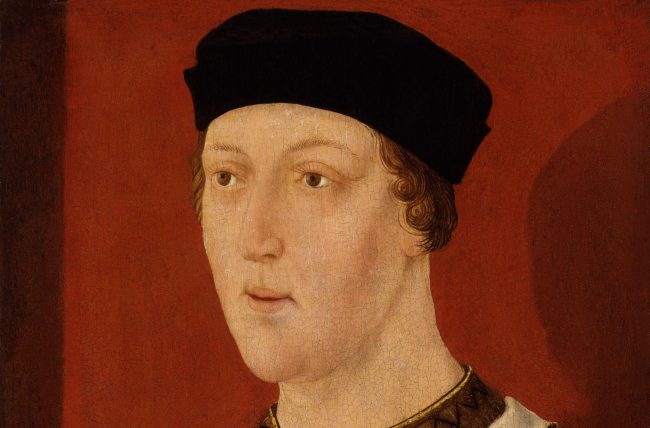
The reign of King Henry VI was one plagued with monstrous misfortunes and dreadful disasters. He inherited a united kingdom at the peak of its power on the European mainland. Yet over the course of his reign he witnessed the decline of his domain into vicious baronial infighting: the start of the Wars of the Roses.
Although he had an evident interest in public affairs and a desire to try and reconcile his warring subordinates, his inability to prevent powerful individuals influencing him – each with their own agendas – caused him to make poor decisions that helped plunge his kingdom into anarchy.
Here are 15 facts about Henry VI, the last Lancastrian monarch.
1. He was the only son of Henry V
Following his heroic victory at Agincourt on 25 October 1415 King Henry V subsequently married Catherine of Valois, daughter of the French king Charles VI, in 1420.
A year later, on 6 December 1421, Catherine gave birth to a son, named after his father.
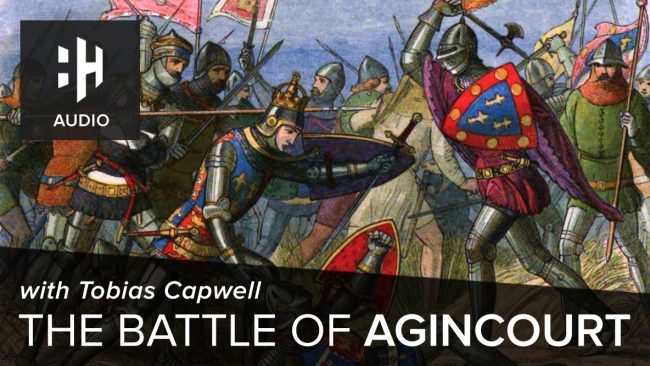
Henry V’s finest hour came at the Battle of Agincourt on 25 October 1415. Dan discusses the major English victory in the Hundred Years’ War with Tobias Capwell, Curator of Arms and Armour at The Wallace Collection. Listen Now
2. He was only nine months old when his father died
Henry V died on 31 August 1422, making his infant son the youngest person to ever succeed to the English throne.
For the next 15 years a regency council ruled for the young Henry. It was dominated by Henry V’s two brothers: John, Duke of Bedford (who oversaw the ongoing war in France) and Humphrey, Duke of Gloucester (who acted as Lord Protector and oversaw affairs at home).
Both Bedford and Gloucester proved capable leaders and administrators during the regency period.
3. During the early years of the regency, English power in France reached its zenith
Bedford’s victory at Verneuil on 14 August 1424 marked the high-tide of English power in France – described by English contemporaries as a second Agincourt.

It was during the regency of Henry VI that Joan of Arc rose to prominence.Watch Now
4. He was the only English king to be also crowned King of France
It occurred because of the Treaty of Troyes, agreed between Henry V and Charles VI in 1420: Henry would marry Charles’ daughter Catherine and both he and his sons would inherit the French throne following Charles’ death.
Thus, when Charles died in 1422 (only two months after Henry V), the infant Henry became the (disputed) successor to the French throne.
He was crowned King Henry VI of England at Westminster Abbey on 6 November 1429; two years later on 16 December 1431 he was also crowned King Henry II of France at Notre Dam in Paris.
5. He was controlled by powerful figures
The most prominent of these figures was Edmund Beaufort, 2nd Duke of Somerset, and Margaret of Anjou, Henry’s wife. Many suspect Margaret and Edmund were lovers.
6. His reign saw the collapse of almost all English holdings in France
The Royal Council’s choice to appoint Beaufort as commander of the English forces in France proved highly unpopular – especially by the previous commander Richard, Duke of York, who had expected to have his posting renewed.
Somerset’s tenure was plagued by countless military failures and concessions: he surrendered Maine, then lost control of Normandy and finally Gascony following the disastrous Battle of Castillon (17 July 1453).
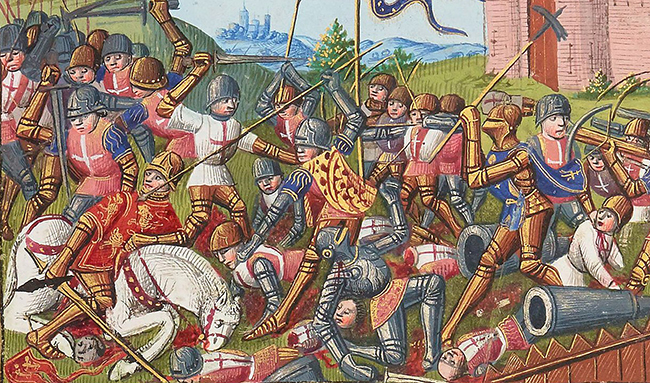
The Battle of Castillon.
7. He suffered a severe mental breakdown in August 1453…
News of the decisive English defeat at Castillon proved the final straw for Henry, who consequently suffered from a mental breakdown of some kind. For over a year he proved completely unresponsive to anything.
To avert the crisis, the ambitious Richard Duke of York was recalled to London and made Lord Protector – effectively regent.
8. …but he recovered a year later
Henry VI recovered from his insanity at around Christmas time in 1454. Edmund Clere wrote to his cousin John Paston to celebrate the news:
“Blessed be God, the King is well amended, and hath been since Christmas Day; and on Saint John’s Day [27th December] commanded his almoner to ride to Canterbury with his offering, and commanded the secretary to offer to Saint Edward.”
In hindsight however, many describe Henry’s recovery as a national disaster.
9. He was captured at the opening battle of the Wars of the Roses
Henry’s decisions following his recovery would help plunge his country into civil war: the Wars of the Roses. Having alienated the Duke of York and his followers, enmity between the Yorkists and the Lancastrians reached breaking point and hostilities erupted.
The opening engagement at St Albans on 22 May 1455 proved ill-fated for Henry and his army. York and his supporters gained a decisive victory, the Dukes of Somerset and Clifford – two of Henry’s most prominent allies – were killed in the fighting and a wounded Henry was captured.
 Watch Now
Watch Now10. He made a valiant attempt to reconcile his warring nobles
On 25 March 1458 Henry attempted to bring an end to the tumultuous civil war by organising a reconciliation event between prominent Yorkists and Lancastrians at St Paul’s Cathedral.
Although Henry’s attempt at reconciliation was genuine and initially successful, the peace gained at the ‘Loveday’ was short-lived; hostilities broke out again soon after.
11. He was captured a second time
It followed the Lancastrian defeat to the forces of York’s son Edward at the Battle of Northampton on 10 July 1460.
 Listen Now
Listen Now12. Henry was temporarily restored to the English throne on 3 October 1470
The defection of ‘the Kingmaker’ Richard Neville, Earl of Warwick, to the Lancastrian cause in 1470 shifted the pendulum of power in English politics. Edward IV fled into exile and Henry was once again restored as king, albeit in name only – the real power lay with Warwick.
13. His only son died at the Battle of Tewkesbury
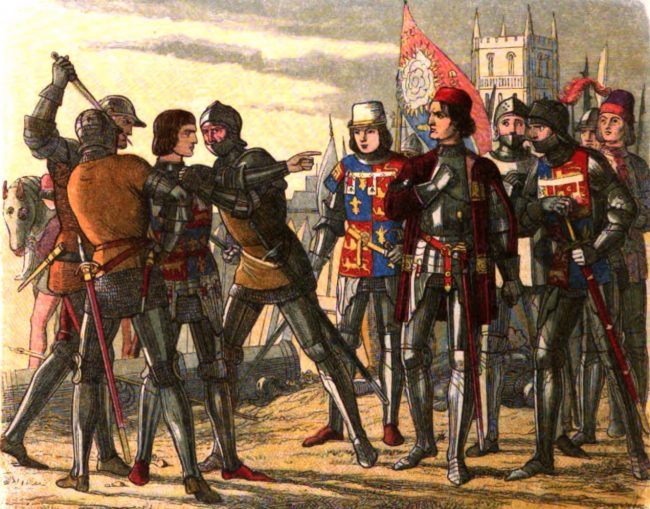
The murder of Prince Edward. One version of events states he was taken to Edward IV and executed after he remarked, “I came to recover my father’s heritage.”
On 4 May 1471 Edward and his Yorkists won a decisive victory against Queen Margaret and her Lancastrians at Tewkesbury.
What followed was a massacre, The fleeing force attempted to cross the river Severn and reach safety, but the Yorkists, in hot pursuit, cut down large swathes of them in a meadow by the riverbank – today known as ‘the Bloody Meadow.’
It was during this rout that Henry’s only son, Edward Duke of Westminster, was discovered by Edward IV’s brother the Duke of Clarence, and swiftly beheaded.
14. Henry met his end on 23 May 1471 in the Tower
Some say he died out of grief after he learned of the death of his son at Tewkesbury; others believe he was murdered on the orders of King Edward IV. Archaeological study of Henry’s skull suggests he suffered a violent end, adding further credence to the latter belief.
Likely in an attempt to blacken his name, the Tudor polymath Thomas Moore claimed Richard III personally carried out the murder.
 Watch Now
Watch Now15. He formed the historical basis for one of Shakespeare’s greatest plays
Shakespeare’s trilogy of plays, ‘Henry VI’, is set during the lifetime of Henry; the Lancastrian monarch is a central character:
“Would I were dead, if God’s good will were so; For what is in this world but grief and woe?”
It was first performed on 3 March 1592.
16. (Bonus) Henry VI is very similar to the monarch who succeeded Alexander the Great
The similarities between Henry VI and Philip Arrhidaeus III, the man who was crowned king in the aftermath of Alexander the Great’s death, are staggering. Both suffered from mental impairments that hindered their ability to rule effectively; both were easily controlled by more powerful, ambitious figures.
Both oversaw the descent of their kingdom from its zenith into a bloody civil war; both were later murdered; both were the last of their royal dynasties to assume the kingship.
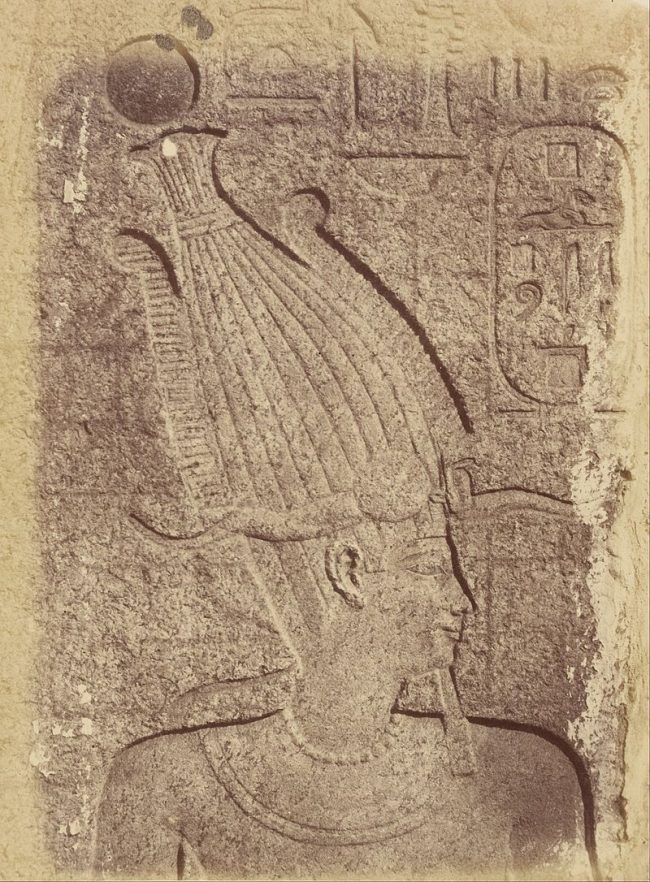
Philip III as pharaoh on a relief in Karnak














